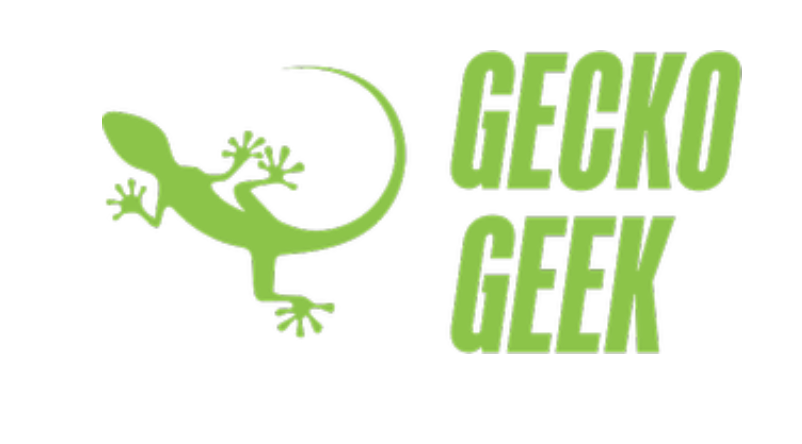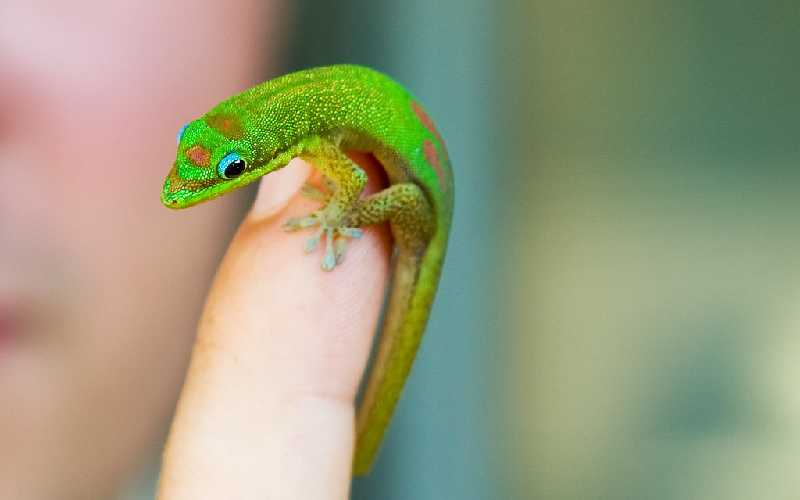Gold Dust Day Geckos attract a variety of birds and other wildlife to their brightly-colored, playful skin. Their beautiful colors a vivid representation of their innocent nature and they make wonderful pets. Gold Dust Day Geckos typically blush red or pink.
Introducing the Gold Dust Day Gecko and their colouring
They can have orange or yellow tones as well, but nothing as intense as the Red or Pink Blushing morphs. The blushing morphs fade with age so when they are young their blush is very vivid and noticeable. Once they are older their blush will disappear completely or it will be a lighter shade. The cheeks and crests of males are bright pink. Females also blush but it is usually orange or yellow in colour instead of the bright red that the males have. Adult females tend to have more yellow or green in their cheeks and crests than males do. Because of this beautiful colouring, gold dust day geckos make popular pets. So how do you care for a gold dust day gecko?
Gold Dust Day Gecko Care
This is a very popular pet for kids because they are very easy to care for, they are pretty calm, and in most cases, they actually do not eat live insects-they need to eat crickets and mealworms.
Diet of the gold dust day gecko
Gold Dust Day Geckos need to be fed a diet of crickets and mealworms. They are omnivores and will eat other insects or animal matter including small worms and even small snails from time to time. They will not eat large beetles or crickets or spiders or such because they are too big for them to eat comfortably. Most pet stores sell feeder insects and worms that can be used as food for your lizard. Crickets should be dusted with calcium and vitamin supplements every few days and mealworms should be dusted with calcium and vitamin supplements every few days to a week depending on their age. This is good to do anyway, but if your gecko eats mostly insects then it may be a good idea to supplement their diet with extra vitamins and calcium.
Housing
Gold Dust Day Geckos prefer to be in a well ventilated area where the temperature is 75-80 degrees Fahrenheit and the barometric pressure is between 75 and 100 pounds at sea level. They also need a place that is maintained at a consistent humidity of between 50 and 80 percent. Wood surfaces that are unfinished or unpainted are best for them. They also need some form of cover such as a screen top or glass cover or an aquarium lid. If the cage is outdoors then the cover should be screened or plastic or be made out of screen or plastic. The cage should be cleaned at least once a week.
Handling
Gold Dust Day Geckos are friendly and outgoing but they are still wild animals and should not be handled or exposed to young children without a cage cover in place. They are very docile so they do not pose a serious threat, but the chances of a child being injured or scratched by an adult gecko are increased with only a closed cover in place. They can bite through thin clothing and scratch like a cat so it is best to have a cover between children and the cage.
They require very little space so a 20 gallon aquarium or a similar sized glass terrarium with screened sides and top can replace the need for a glass aquarium with glass lid or a glass terrarium with glass lid. The aquarium or terrarium should have screened or wire mesh doors or sides as well to prevent escapes, and the sides of the cage.
If you enjoyed this article you might also like to read about African Fat-Tailed Gecko Care


1 thought on “Gold Dust Day Gecko Care”